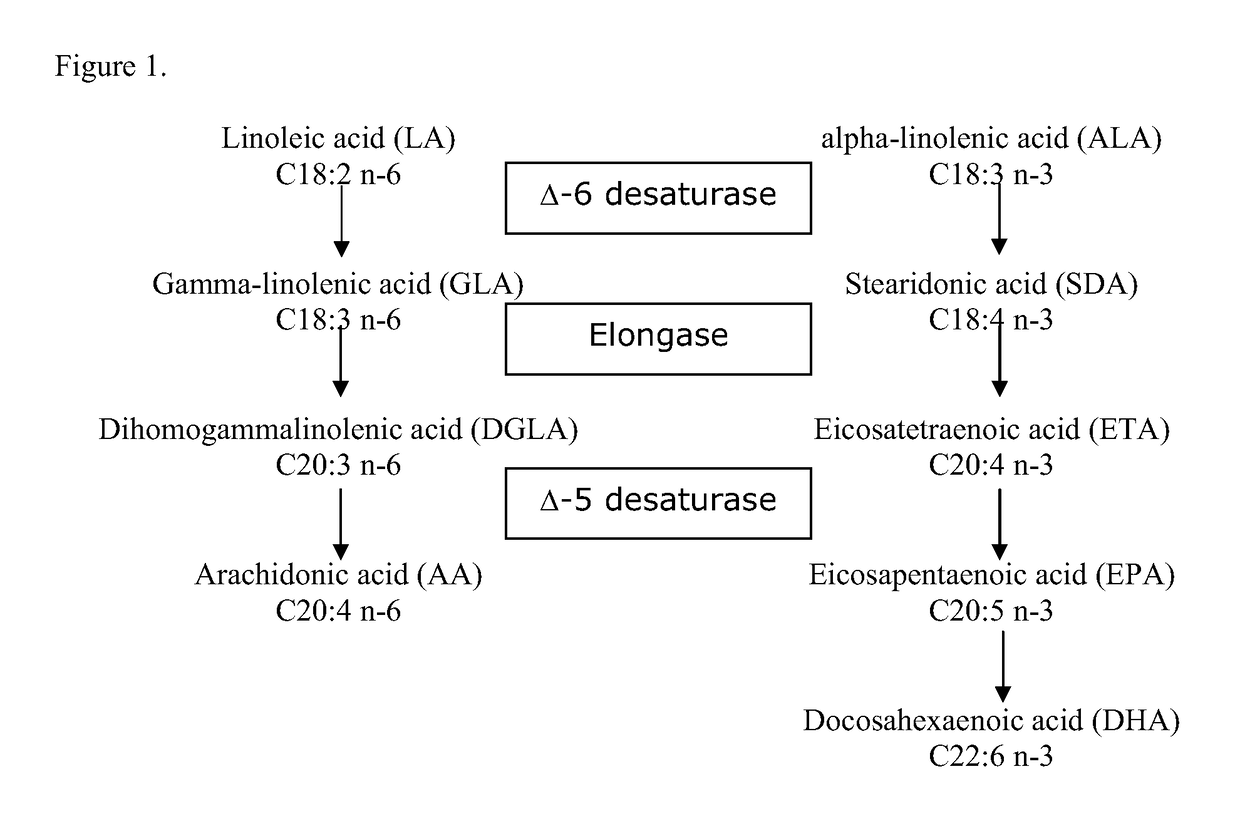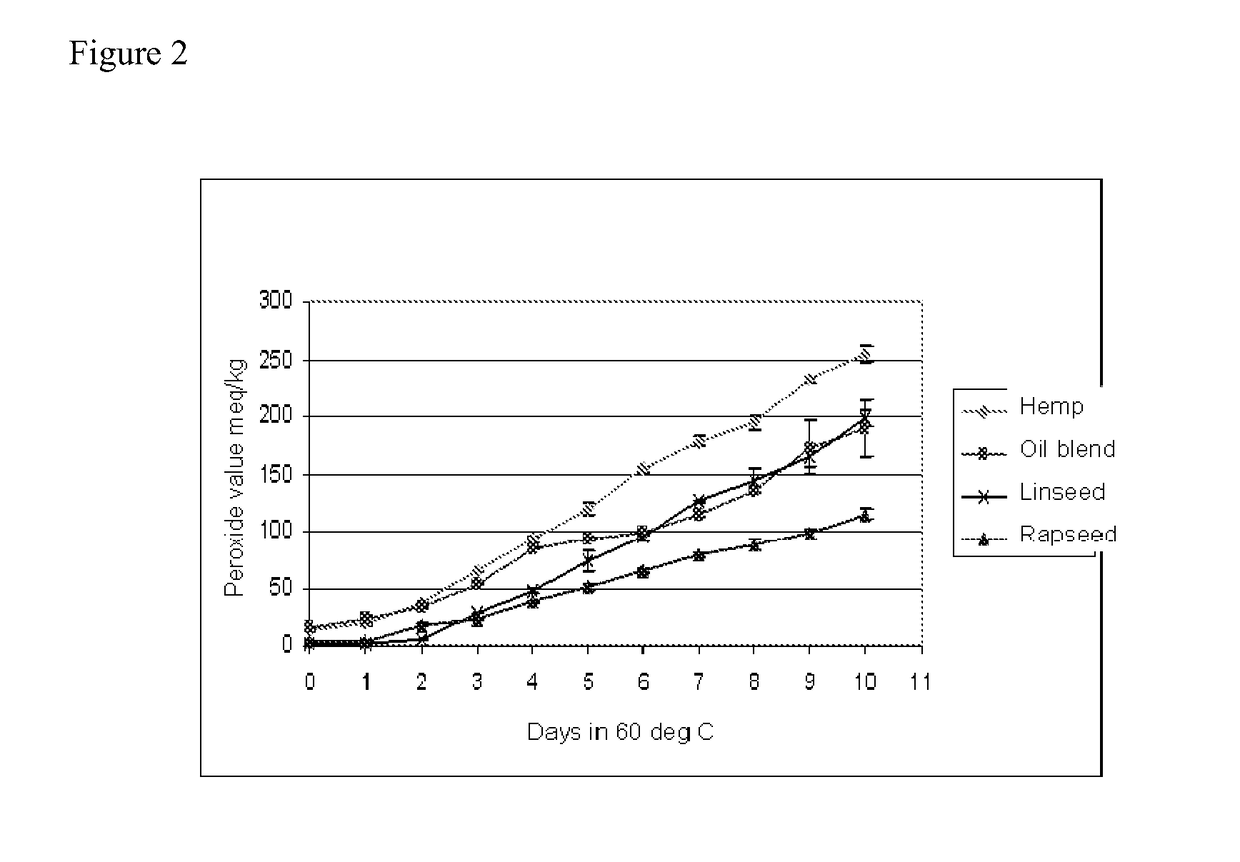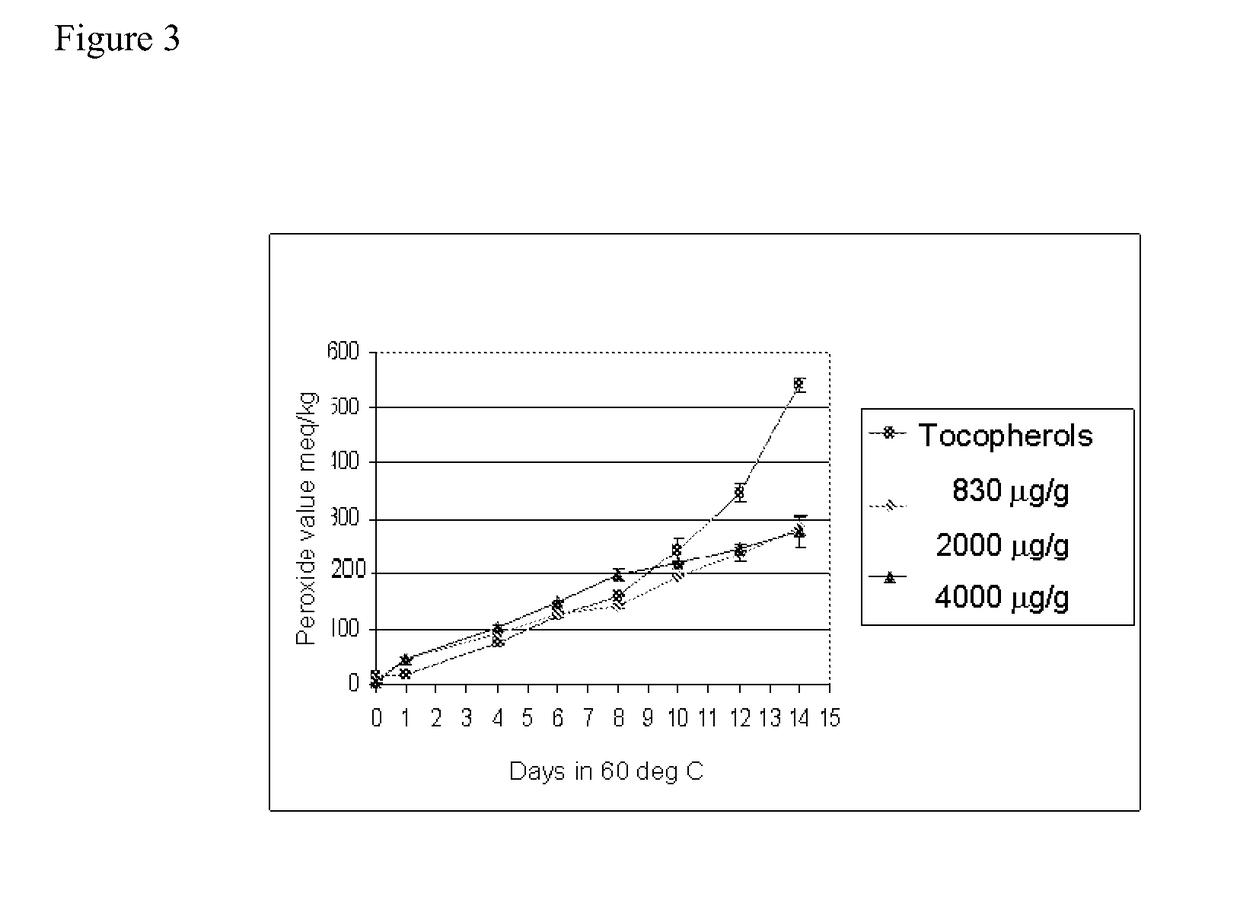Lipid composition for the treatment of skin problems in companion animals
a technology for companion animals and lipids, applied in the field of lipids and nutrition, can solve the problems of excessive shedding, skin and hair problems of companion animals, dry skin, etc., and achieve the effect of improving the skin, hair or paw pads of said animal, and treating or preventing one or more conditions
- Summary
- Abstract
- Description
- Claims
- Application Information
AI Technical Summary
Benefits of technology
Problems solved by technology
Method used
Image
Examples
example 1
[0030]Hempseed oil (made from Finola variety of seeds), rapeseed oil and linseed oil were mixed in approximately 50:45:5 (v / v / v) ratio. This oil blend was homogenized and a mixture of natural d-tocopherols—β, β, γ, δ (Coviox T-70) was added to the mixture at 2000 μg / g of oil. The fatty acid profile was determined using GC-FID and tocopherols using NP-HPLC with fluorescence detection. The results are listed in table 1. Listed in table 2 is the typical fatty acid profile of the individual oils used to prepare the novel lipid mixture in this example.
[0031]
TABLE 1Major fatty acids and tocopherols in the nutritional oil blendFatty acids, % of total fatty acids16:04.418:02.018:1 (n-9)29.318:2 (n-6); LA34.318:3 (n-6); GLA2.018:3 (n-3); ALA17.818:4 (n-3); SDA1.0LA:ALA 2:1GLA:SDA 2:1LA:GLA17:1ALA:SDA18:1Tocopherols, μg / gα-tocopherol405β-tocopherol40γ-tocopherol1812δ-tocopherol511TOTAL2769
[0032]
TABLE 2Fatty acid profiles of the individual oils used in example 1.Hemp seed oil1Rapeseed oilLinse...
example 2
[0033]A placebo controlled, double blind study was performed using 91 dogs living with their owners. Recruited dogs were of different breeds and considered to be without any apparent skin problems. Duration of the study was 8 weeks with control visits by the researcher at the start of the study, half way through the study and in the end of the study. The dogs were administered either placebo (rapeseed oil) or test oil (nutritional oil blend) at 4 ml / 10 kg of body weight on top of their normal diet. Only dogs that did not use any other oil supplements were recruited. Owners of the dogs were given questionnaires which they filled in at each control visit. The purpose of the study was to examine the safety and tolerability of a nutritional oil blend as prepared in example 1 in comparison to rapeseed oil placebo. Rapeseed oil contains LA and ALA in 2:1 ratio and it is essentially devoid of GLA and SDA. As described in table 1, nutritional oil blend contained LA and ALA as well as GLA an...
example 3
[0034]Dogs with white hair coat often develop a yellowish / brownish taint. The inherent reason for the discolouring is not known, but there could be an association with diet. In show dogs, the discolouring is obviously not a desirable characteristic. A litter of six puppies of White Shepherds was divided in two groups at the time of weaning. Three puppies were supplemented daily with the nutritional oil blend as prepared in example 1 and followed for six months of age. At this age it was evident that the three dogs supplemented with the nutritional oil blend had much whiter hair coat than the three puppies that were fed a standard dog chow containing sufficient amounts of essential fatty acids without any oil supplementation.
PUM
| Property | Measurement | Unit |
|---|---|---|
| gas chromatography | aaaaa | aaaaa |
| durability | aaaaa | aaaaa |
| mass spectrometry | aaaaa | aaaaa |
Abstract
Description
Claims
Application Information
 Login to View More
Login to View More - R&D
- Intellectual Property
- Life Sciences
- Materials
- Tech Scout
- Unparalleled Data Quality
- Higher Quality Content
- 60% Fewer Hallucinations
Browse by: Latest US Patents, China's latest patents, Technical Efficacy Thesaurus, Application Domain, Technology Topic, Popular Technical Reports.
© 2025 PatSnap. All rights reserved.Legal|Privacy policy|Modern Slavery Act Transparency Statement|Sitemap|About US| Contact US: help@patsnap.com



